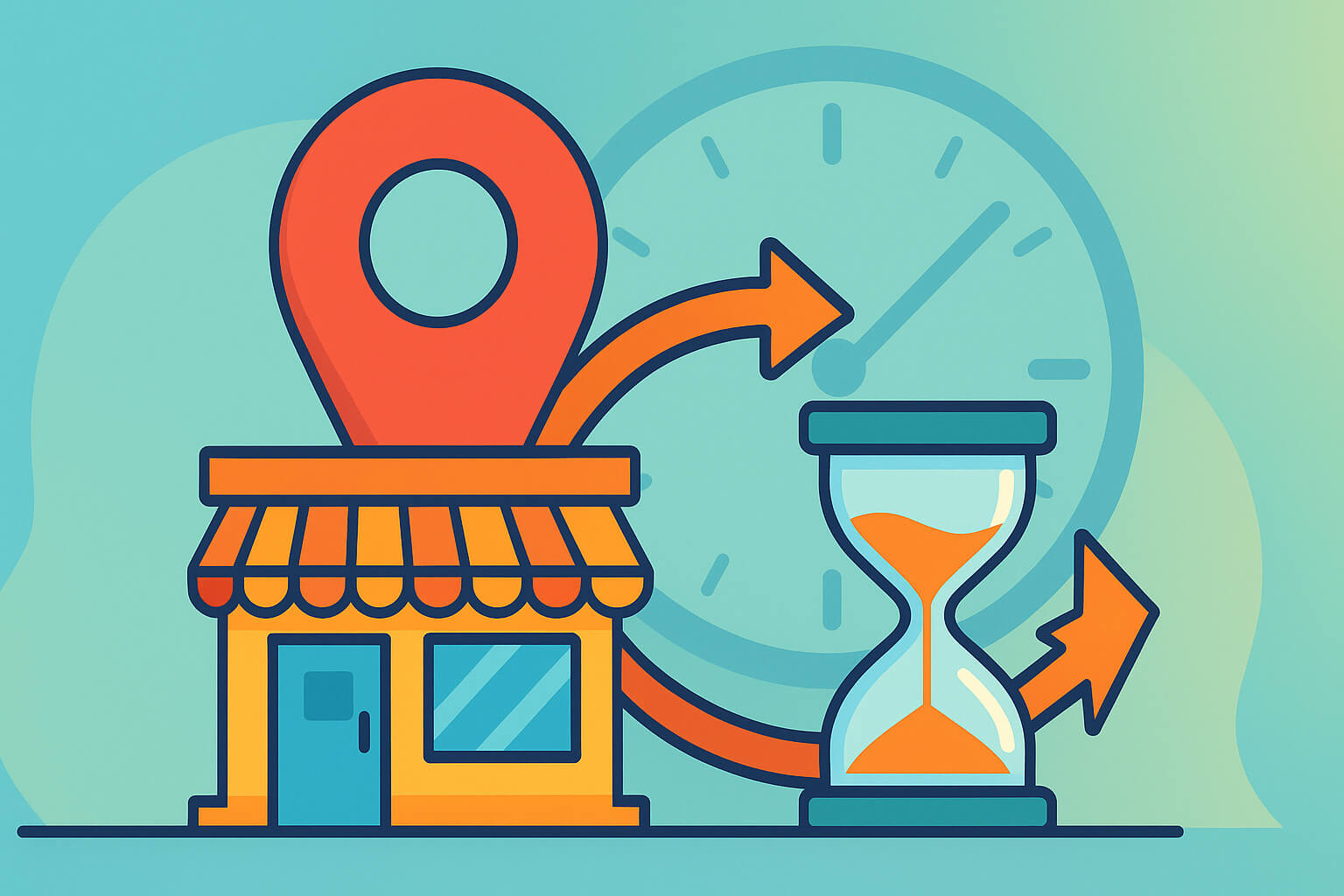It’s a fair question, especially when you need answers fast: how long does local SEO take? Most businesses that do local SEO the right way will start to see clear wins in three to six months, with steady growth after that first year.
But every shop, café, or clinic moves at its own speed because search engines like Google look at hundreds of tiny clues before trusting a business. Below is the plain-language road map.
Why Local SEO Needs Time
Google’s job is to stop spam and show real stores. It checks if your name, address, and phone (NAP) match across the web, if reviews look honest, and if your site helps people. Crawling, comparing, and ranking all that info takes weeks. Almost 46% of all Google searches look for something local. That crowd is huge, so Google moves with care.
“SEO is a marathon, not a sprint.” – Search Engine Journal
“Give SEOs 4-12 months to see positive ranking benefits.” – Search Engine Roundtable
Key reasons Local SEO isn’t instant
- Crawl and index cycles. Google may revisit your pages weekly or monthly. Each pass updates rankings.
- Trust building. Reviews, links, and consistent name-address-phone data all add proof over time (BrightLocal).
- Competitive signals. Rivals who already rank force Google to test your content for quality before you can outrank them (Mavlers).
So, then how long does local SEO take?
| Stage | What Happens | Typical Time* |
|---|---|---|
| Weeks 1-4 | Claim Google Business Profile, fix NAP, audit site speed | 1 month |
| Months 2-3 | First map-pack moves, more phone calls | 2-3 months |
| Months 4-6 | Top-five rankings for mid-competition phrases | 3-6 months |
| Months 6-12 | Strong organic traffic, review growth, stable leads | 6-12 months |
*Based on multiple industry polls and studies.
Quick math from the experts
- 28% of local pros saw ranking lifts in 1-3 months (BrightLocal) .
- Only 11% believe a brand-new site can crack the map pack inside two months.
Factors That Speed Up or Slow Down Rankings
1. Starting Point
Older domains often carry more backlinks, so they earn trust faster (uSERP).
2. Local Competition
If you run the only bakery in a rural town, rankings come fast. In a major city with dozens of bakeries, expect the upper range of the timeline (Zero Gravity Marketing).
3. Website Health
“The best content won’t rank if search engines can’t crawl or load your site” (OWDT). Fix technical issues first.
4. Consistent Effort
Monthly work, not one-off bursts, keeps momentum (AgencyAnalytics).
5. Review Velocity
BrightLocal’s 2023 survey shows 98% of shoppers read reviews each year (BrightLocal). Fresh five-star feedback helps rankings and conversions alike.
Common Mistakes That Add Extra Time
- Set-and-forget mindset. Inactivity can stretch results beyond a year (Zero Gravity Marketing).
- Inconsistent NAP. Phone changes not fixed everywhere confuse Google.
- Keyword stuffing. Overuse can hurt trust.
- Buying low-quality links. Penalties push the clock back months.
- Ignoring site speed. Slow pages lose both rankings and shoppers.
Fast Wins While You Wait
- Add your main keyword plus city to the title tag (a top on-page factor) .
- Post one photo a week on Google Business Profile.
- Ask happy customers for a short, honest review right after service.
- Embed a local map and directions on your contact page.
- Publish a 500-word FAQ that answers the “near me” questions people type.
The Long Game (Months 6–12)
Local SEO is like caring for a garden. You water (post), prune (fix errors), and harvest (leads). Backlinko reports 72% of shoppers start with Google Search and 51 percent flip to Google Maps . Staying visible means:
- Refreshing service pages each quarter.
- Earning local press links a few times a year.
- Keeping review replies polite and keyword-rich.
“SEO is a marathon, not a sprint… substantial results typically take 3 to 6 months.” – Randy Speckman Design
How to Track Progress
- Rankings. Check map-pack position once a month.
- Clicks. Watch Google Analytics and Google Search Console for steady climbs.
- Review count. Aim for two new reviews weekly.
- Google Business Profile Insights – Calls, clicks, and direction requests.
- Local visibility audits. Diffyweb can help you with this >
What If Nothing Moves After Six Months?
- Check if you picked keywords too broad.
- Scan for duplicate listings or wrong addresses.
- Compare your review count with the top three rivals.
- Re-run a technical audit; broken pages stall growth.
- Consider fresh content: blog posts, case studies, or local landing pages.
Industry toughness can push real wins past a year. Fiercely competitive cities often require 12 months to dominate. Steady work beats flashy hacks; Semrush polls place the sweet spot at 3-6 months for first strong gains.
Key Takeaway
For most small businesses, meaningful local SEO gains show in three to six months, with stronger, lasting returns after a full year of consistent work. The sooner you start the basics. Clean NAP, fast site, real reviews, etc., the sooner Google and other search engines trust you.
